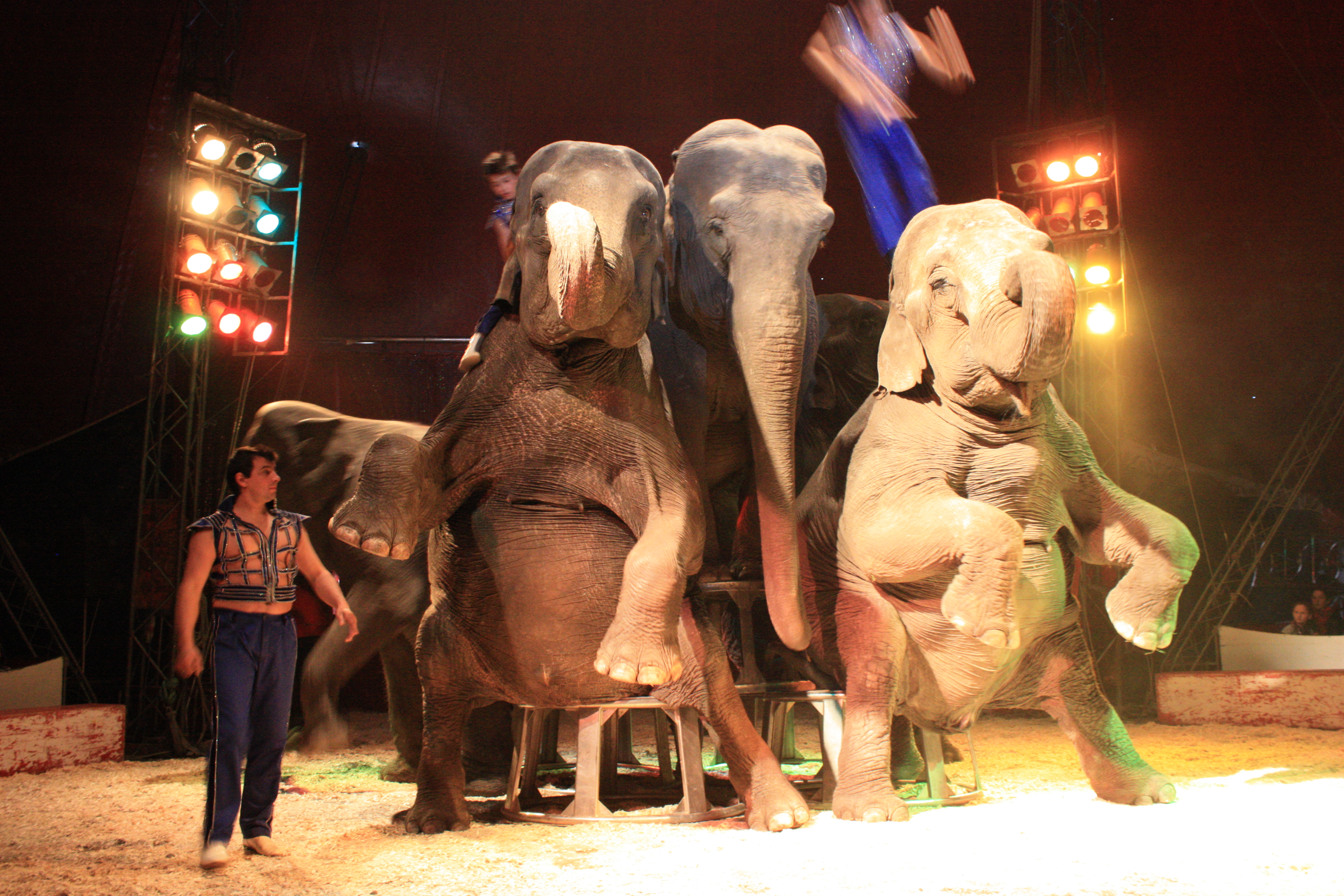Courtney Brothers Circus
Circus owned by Wayne Courtney
Information gathered from 2012 investigation (click here to read full report) :
Animals: 5 elephants, 4 Shetland ponies, 2 Bactrian camels, 1 alpaca and 1 reptile (possibly a monitor lizard)
Pony Act: Ponies jumped over barriers, put front legs on ringside barrier, performed front leg bow and reared/walked on hind legs
Camel, Alpaca and Monitor Act: Walked into the ring, stood and walked out. The monitor lizard was carried around the ring by a member of staff.
Elephant Act: One elephant walked around ring with boy sitting on her and another hanging from her trunk. Later, all five elephants were used and tricks included: standing and sitting on podiums; rearing up and putting front legs on rear of one in front; walking out of the ring by rearing and walking with front legs on rear of elephant in front.
To read more about the elephants at Courtney Brothers Circus. Please click here.
CAPS’ Veterinary Advisor Samantha Lindley BVSc MRCVS comments on elephant act:
In the first performance a child is hanging from, and then actively swinging on, the elephant’s trunk. This powerful yet sensitive piece of muscle is vulnerable to damage and in particular ‘trunk paralysis’. This act is particularly irresponsible. It is also dangerous for the child as he is vulnerable to being thrown [by her].
The video footage of the second act, using all five elephants, shows actions that can place repeated strain on the joints and muscles of these animals. If one takes into account rehearsal and performance these are significant levels of abnormal exercise that these elephants are required to perform and are likely in my opinion to have an impact on their long-term health, in particular musculoskeletal pain.
The apparent ‘lead’ elephant then does two things that appear to be pertinent:
Firstly, she weaves (none of the others do this so I do not think it is part of the performance) before backing up to sit down. This is a displacement activity and the most likely reason for it occurring here is that she does not want to perform the manoeuvre. She then sits much more slowly than do the other elephants.
Then, when this ‘trick’ is repeated, she again weaves, but more persistently and she is much more reluctant to back up and sit down, so much so that the older trainer has to come round to encourage her, which takes some time. One of the possibilities is that she finds this movement painful or difficult.
As usual with such circus acts, any resemblance to the performance behaviours being ‘only part of what the animals would do in the wild’ is non-existent. These postures (sitting on their hindquarters and balancing on the stools) are unnatural and likely to be put strain on muscles and joints, leading to pain and disability. Captive elephants are prone to the development of arthritis and this kind of repetitive behaviour will exacerbate joint wear and tear.
Circus History:
Animals used throughout the years:
Animals used in 2010: Ponies, camels, horses, dogs, ostrich,kangaroo, zebras
Animals used in 2008: Ponies, camels
Animals used in 2007: 2 elephants, giraffe, camels, ponies, horses
Animals used in 2006: 2 elephants, giraffe, camels, ponies
The Courtney Brothers Circus was previously known as the Great European Circus in 2008, and before that it toured as Royal Russian Circus. In 2011 the third second change of name took place, along with some worrying additions to the show, in the form of five elephants.








